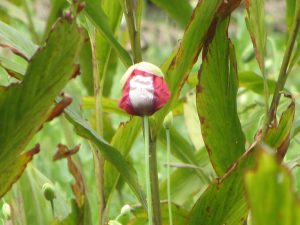During a period of two weeks from August to September 2015, the plains and foothills of Arunachal Pradesh in northeast India received an excess of 100 millimetres of rainfall on five separate days. By 11 September, the villages of Anpum and Loklung, located in the Paglam circle of the Lower Dibang Valley district in Arunachal Pradesh, were entirely washed away by the expanding Dibang River. Residents escaped via motorboats in the nick of time.
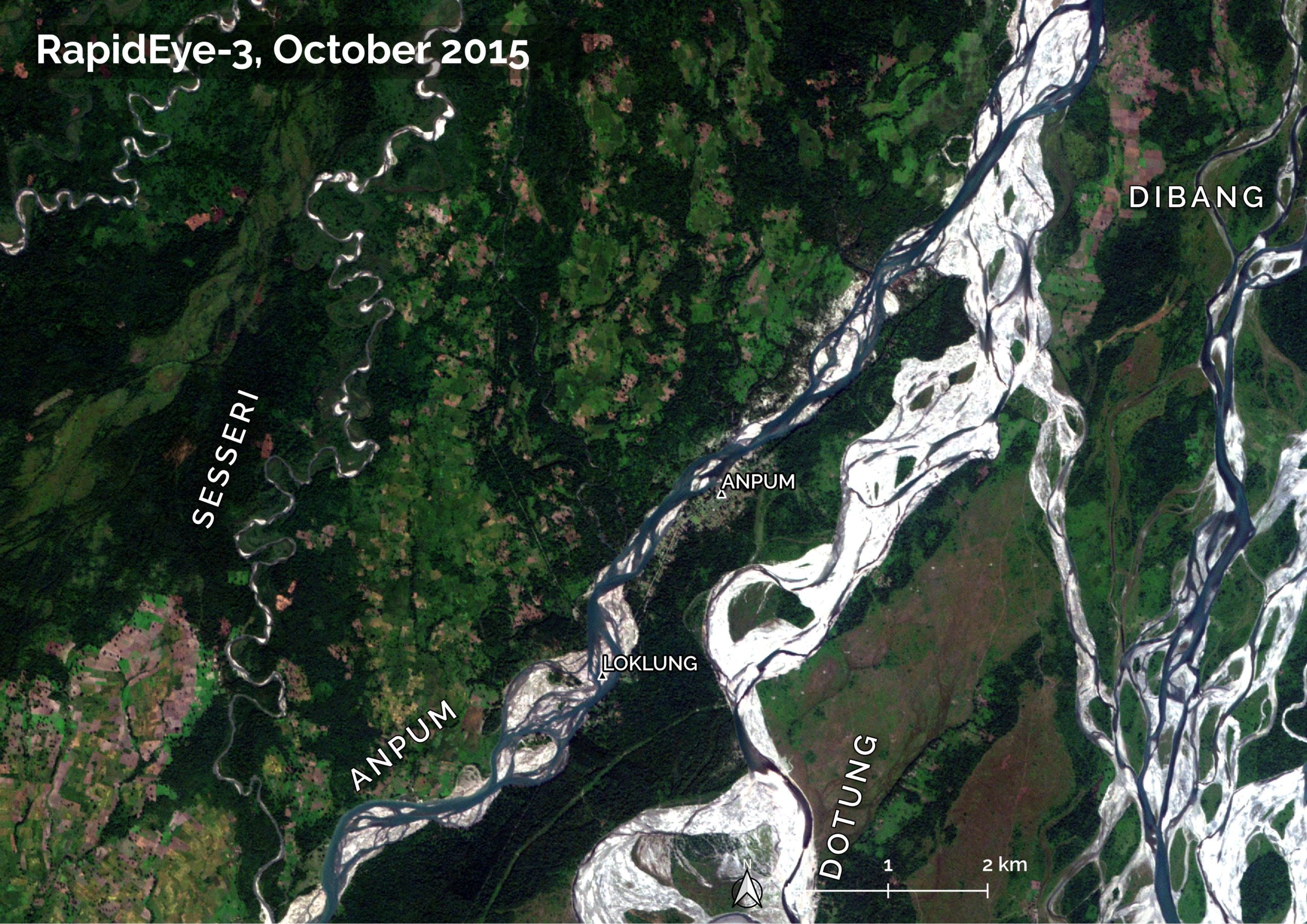
Since 2010, the villagers had clung to the hope that the Anpum River, once crossable by foot, would only expand slowly. But the river had been captured by the Dibang River in 2004.
This phenomenon occurs when a river is diverted from its bed, and flows instead down the bed of a neighbouring stream. After being captured, it may stop draining water from its source but start draining water from the river that has taken over its course.
Excess rainfall exacerbated India’s largest landslides near Nizamghat and possibly blocked some channels, forcing the Dibang River to find a new channel further west. It eroded the banks of the village river and expanded to drain water from the Dibang’s watershed rather than the Anpum’s. Two weeks of excess rainfall at 685 mm had a massive effect, tripling the width of the Anpum River from 80m to 250m.
Running from the river
Munsu Perme, who used to live there, recalls being able to salvage only the most basic household essentials, while caring for her sister and her newborn. The most vulnerable members of the community were the first to cross the expanding Dibang river by paite, a type of motorboat.
Munsu’s husband, Dibang Perme, remembers taking off in the morning darkness to find the paite cutting their way through the dense understory below the semul (silk cotton) trees. He walked under a deluge of rain as the river rapidly eroded the banks on either side of the village.
Across the river, the vulnerable who had escaped camped under tarpaulins and makeshift bamboo huts erected on their farmland. Most men, including Dibang Perme, had to wait out the storm under tarpaulins on the same side as their flooded villages as the paite was low on diesel and the river was too dangerous to cross. They survived on salt, rice and small game as it took several days until help arrived from neighbouring villages.
This incident spelled the end of a thriving community, complete with a Primary Health Centre and higher secondary school. Now, the only signs that a community once lived here are the crumbling pillars of a bridge on a large sandbar in the centre of the river.
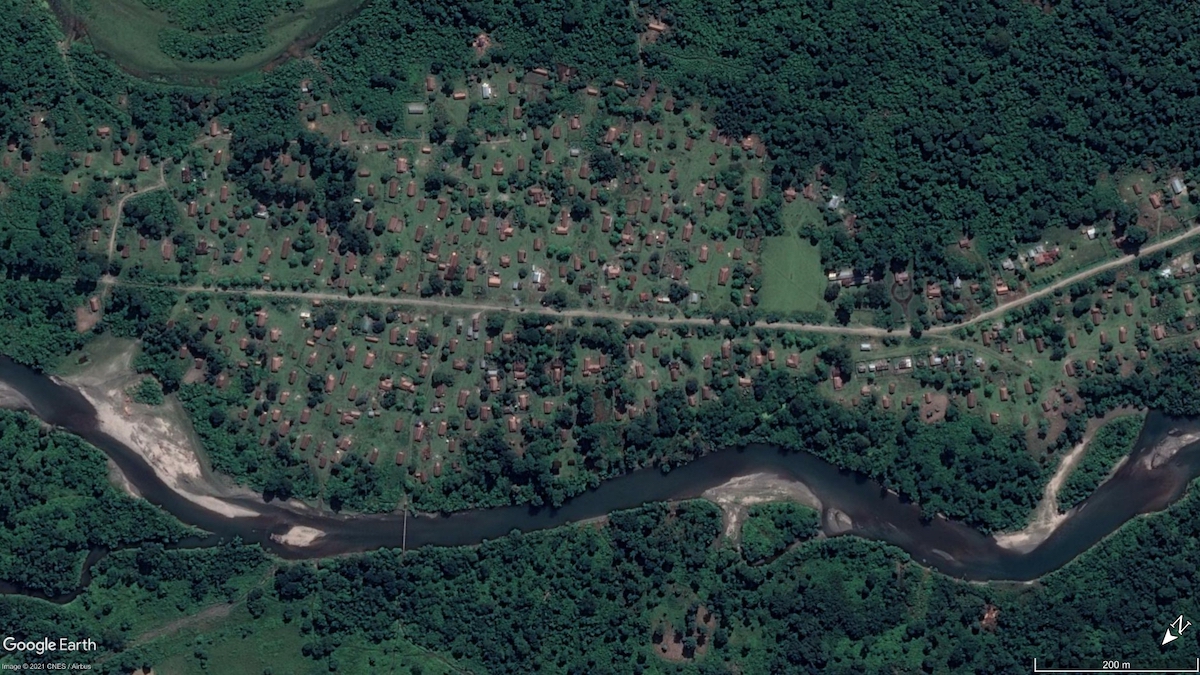
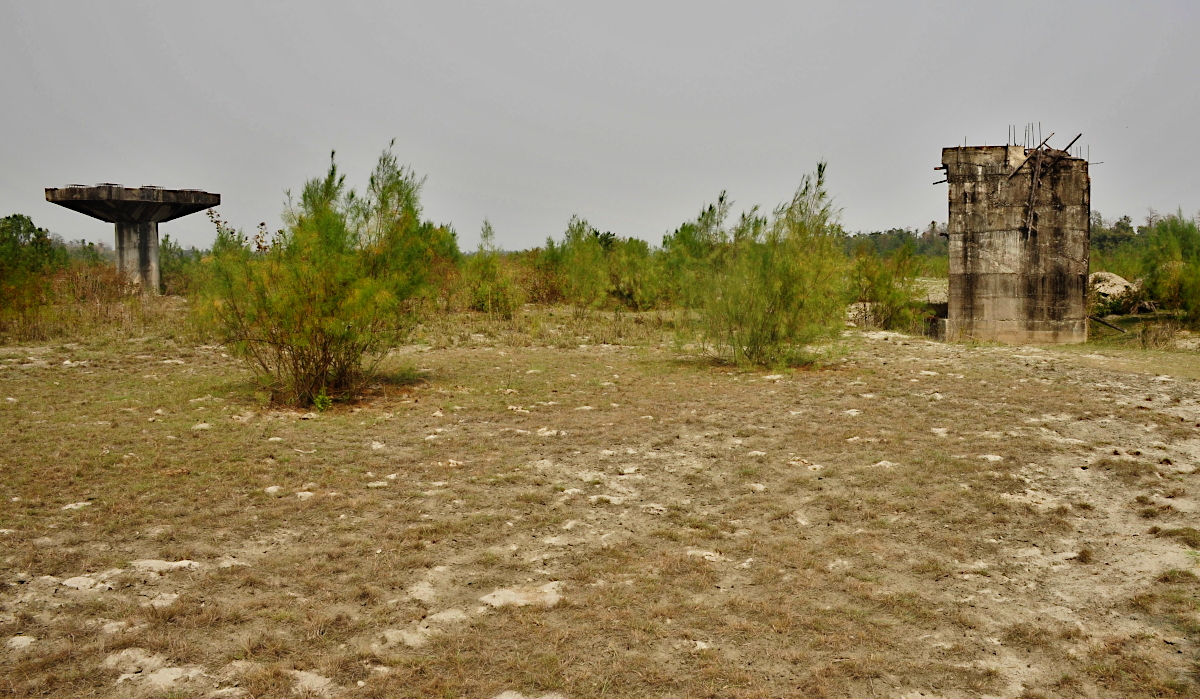
A history of changing channels
The flooding of Anpum and Loklung villages in 2015 is regarded as the worst disaster since 1950 along the last 50 kilometres of the Dibang River’s western bank.
Never had the present generation seen so much destruction in so short a time. However, piecing together eyewitness accounts of floods, historical observations and archival satellite imagery from as far back as the 1980s reveals that the changing course of the Dibang River is part of a complicated feedback system between the ecology, hydrology, geology and meteorology of this region going back millions of years.
This feedback system was touched upon by Frank Kingdon-Ward, a botanist who was exploring Arunachal Pradesh when the 15 August 1950 earthquake struck, which measured 8.6 on the Richter scale (the largest instrumentally recorded earthquake in the Himalaya).
This area – then part of the state of Assam – is located near the borders of the Anjaw, Lohit and Lower Dibang Valley districts in Arunachal Pradesh. After traversing several smaller valleys devastated by the earthquake along the Lohit valley, Kingdon-Ward travelled towards the Dibang River and observed that the valley had suffered more than the Lohit.
The Dibang river had been blocked and had changed its course, draining further east. Purana (old) Sadiya is now a large grassland, home to hundreds of cattle and dozens of vultures. This is the sad end of a habitation that used to be the capital of the Chutia and Ahom kingdoms, and was later the northeast frontier station of the British Empire. Eighteen months after the earthquake, the area was covered in flood deposits like Nizamghat.
Up until 1998, the bulk of the Dibang River’s volume drained via channels closer to the eastern bank. However, extreme rainfall events in May-June 1998 following a very severe cyclonic storm in the Bay of Bengal rapidly opened new channels, expanding old channels close to the western bank. Images captured by Landsat 5 indicate increased sediment deposition from landslides where the river emerges onto the plain.
Excess sediment loads, along with debris and vegetation, are known to block channels and raise riverbeds, triggering the formation of new channels in the flood basin – a process known as avulsion or detachment of a channel from the drainage network. Such avulsion is typical in anastomosing rivers that are composed of several meandering and braided channels spread across a vast flood basin. These channels are separated by seasonally flooding riverine islands of sediments and vegetation. The channels help drain the immense volume of water and sediment during the wet season.
Anastomosing rivers constitute an important category of multi-channel rivers on alluvial plains. An anastomosing river is composed of two or more interconnected channels that enclose flood basins.
Since 1998, the western bank of the Dibang has been witness to a violently eroding and expanding river, while the eastern bank has been calmer and productive as vegetation continues to recover. Local resident N. Pertin recollects abandoning his home in Lasum village 20 kilometres north of Anpum near the Dotung River, then the westernmost channel of the Dibang. The old road across the river – crossable by foot during the dry season – was obliterated, together with their grain stores, the forest colony and inspection bungalow. About 60% of their crops that year were lost along with vast areas of cultivable land and palm groves, leaving behind thick deposits of sediment.
The people of Lasum resettled in the village of Bizari, then a forest colony for timber operations. Life continued here, precariously held in balance by a productive wet season that provided rice yet laid to waste good arable land – only to be raided in the dry season by elephants seeking nutritious food as their favoured trees were logged in the surrounding wilderness.
Deforestation, rainfall accelerate riverbank erosion
When asked if they received compensation for crop loss, N. Pertin said “apply, apply, no reply”, wryly summarising the indifference of government administrations to their complex problems.
Now in his 70s, Pertin explained that Bizari was developed as a forest colony in 1965 to support logging operations. Yet unusually, the people of Bizari have not been officially recognised as landowners even after decades of cultivating small parcels of land, as it lies “within” the Dambuk Reserve Forest and they are considered encroachers.
This perspective is at odds with the history of the area – only 30 kilometres away is Bomjir (Bomjur in older literature), a village established after the Padam Adi tribe migrated from Damro in Upper Siang district (established between c. 1200 – c. 1300). The Idu Mishmi tribe have lived in this region for even longer than the Adi tribe. Thus, they have certainly had a longer presence in this area than the notifiers of Dambuk Reserve Forest. As it stands now, the Arunachal Pradesh Forest Department is severely understaffed and short of funds, unable to control illegal logging or compensate farmers for crop loss.
Satellite images show a large swathe of seemingly excellent forest cover in the region. However, a closer look reveals something else. Semul is the dominant species in the ecosystem as its soft wood is unsuitable for furniture. It grows relatively fast (60 centimetres a year) and its deciduous nature (shedding all its leaves between January and March) allows for a dense understory jungle to develop. This shows up as “green” all year round even on very high-resolution (50 cm) satellite sensors. Semul are commonly observed in satellite images and their height indicates logging has been ongoing for 50 years or more. However, large crowned tree species (with the crown greater than 40 metres in diameter) such as hard wood Dipterocarpus species and Terminalia myriocarpa (hollock) have been logged into scarcity.
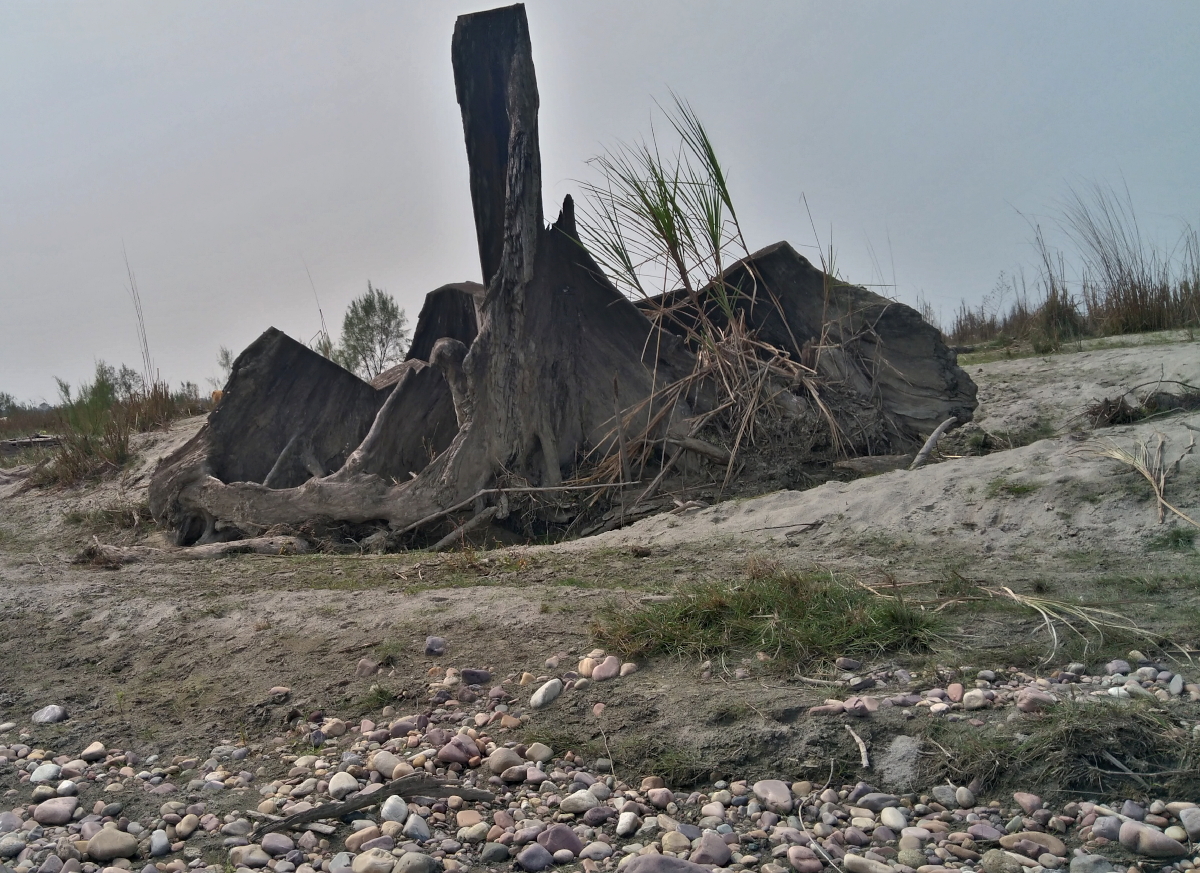
The consequences are evident in the flood basin of the Sesseri River, which meets the Dibang at Bizari. By 2014, a well-developed channel could be observed making its way into these regenerating forests after eroding and breaching its left bank. This new channel cuts off Bizari from the rest of the administrative circle every year during the wet season and has impeded the construction of a bridge ever since. New channels have started to breach the bank creeping further into the forest. Such change in river geomorphology has been observed across the world in ecosystems undergoing deforestation.
This is the state of affairs across the flood basins of the Dibang, Siang and Lohit. Logging continues unchecked and the rivers erode hundreds of metres of bank every year, taking away forests, grasslands and cropland. A historical case in point: decades of deforestation along the southern fringe of Dibru-Saikhowa National Park in Assam led to a new channel of the Lohit River, ultimately isolating it as a riverine island.
Illegal logging continues along the northern bank in Dibru Saikhowa National Park with observable consequences. The residents of the villages along the 50 kilometres of the western bank of the Dibang agree that deforestation is partly to blame. Yet the state itself actively engaged in legal logging until 1998. Logging continues, with a motto that what is not taken today will be taken by the river tomorrow.
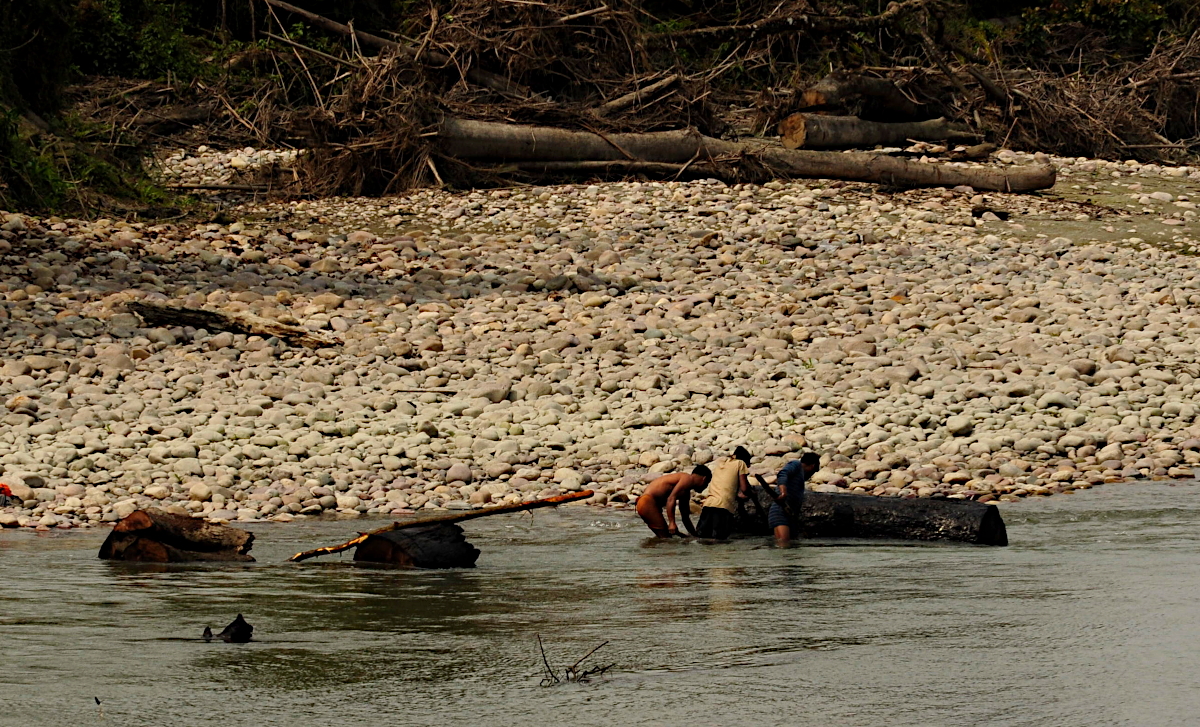
Logging meets climate change
While logging has set the stage for the Dibang’s erosive nature, it is not the only thing responsible. Daily precipitation values from 1981-2020, archived by the Climate Hazards Group InfraRed Precipitation with Station data (CHIRPS), show that the Dibang river basin has received above-normal rainfall (>2 standard deviation of the 40-year mean daily rain) on at least 10 days every year. The number of days with >100mm rainfall stand at between 4-16 every year. When Anpum and Loklung were wiped out in 2015, that year there were 16 days with rain >100mm rainfall. On one day, >200 mm rain fell, an extreme event.

While a more detailed analysis is warranted, the rainfall data when compared with satellite images indicates that above-normal rainfall was associated with dramatic changes in the landscape. This includes sediment deposition several hundred metres from the riverbank, and hundreds of metres of bank erosion. Given the rapid loss of glaciers in the high-altitude mountains of Dibang, glacial lake outburst floods also may have added to the problem.
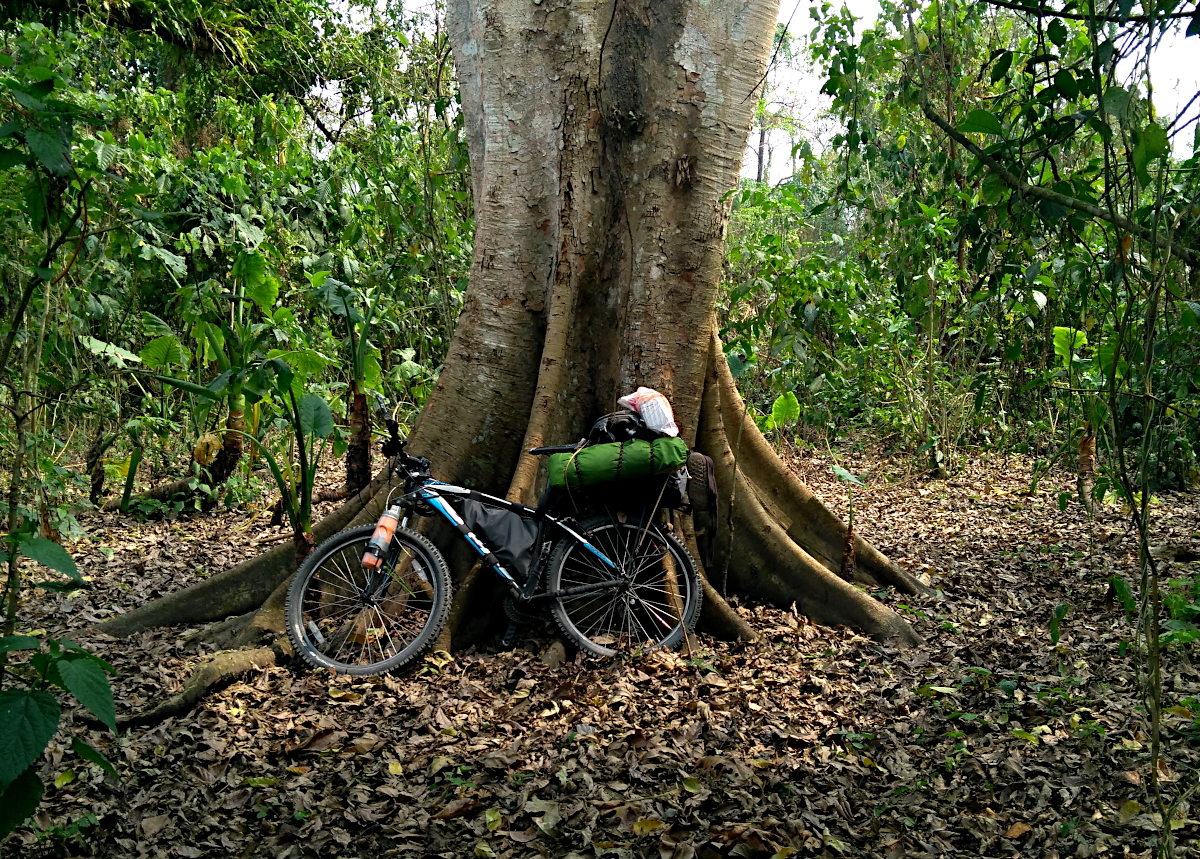
One incident sums up the ecological crises of this region. On the day I was leaving Anpum via a forest trail, I stopped to examine a young tree with beautiful buttresses, wondering what it would become 50 years later. I asked Dibang Perme where all the large trees had gone. He looked at me earnestly and shook his head. I asked why this tree wasn’t cut and he replied “yeh to reject maal hain” (“This tree was rejected [by loggers]”). These are the only trees remaining in this wilderness.
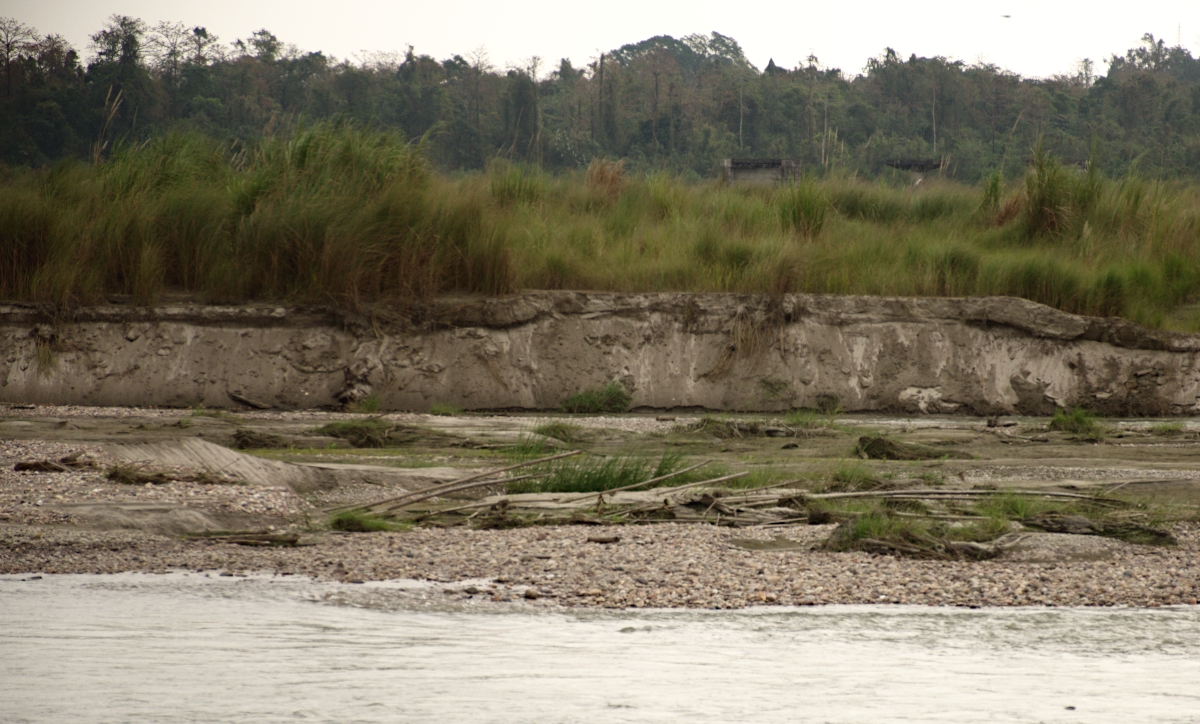
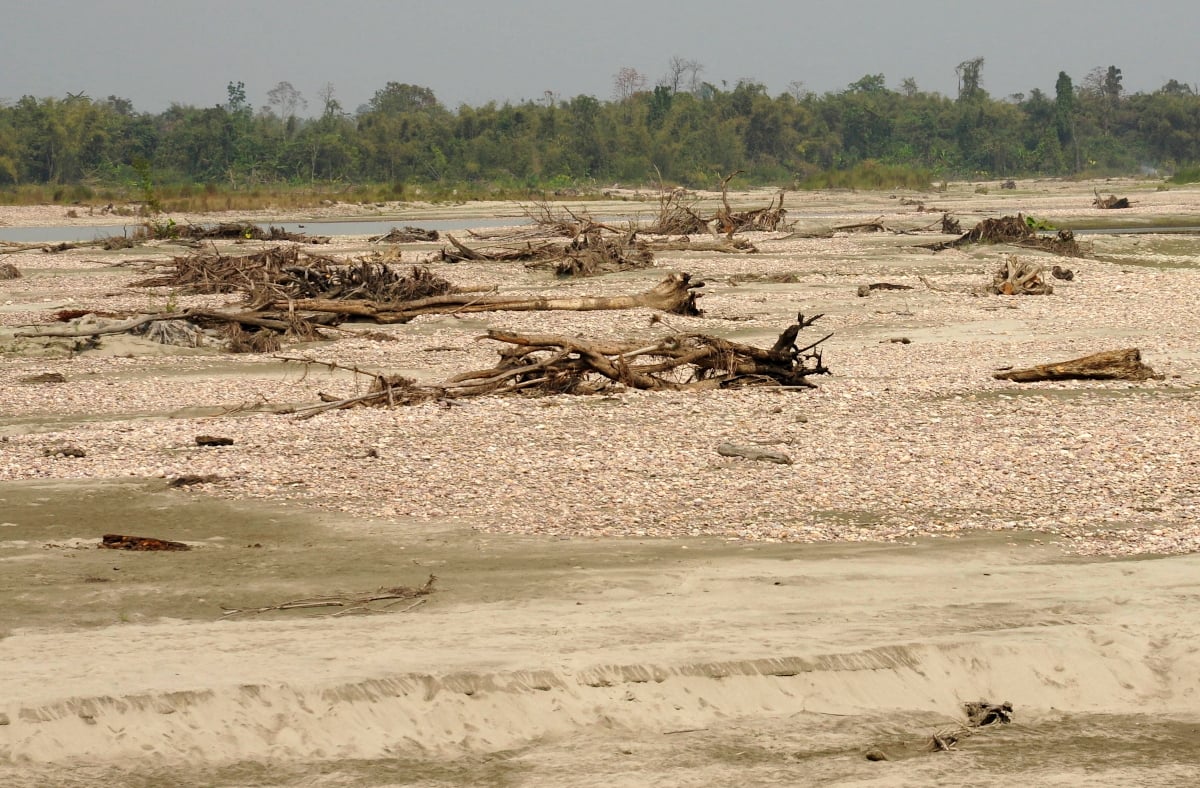


![Black-necked cranes on the Naymjang Chu riverbed near Zemithang village of Pangchen valley in Tawang district. [image by Lham Tsering]](https://dialogue.earth/content/uploads/2016/05/2.-Black-necked-cranes-on-the-Naymjang-Chu-riverbed-near-Zemithang-village-of-Pangchen-valley-in-Tawang-district.-Photo-by-Lham-Tsering-300x190.jpg)

